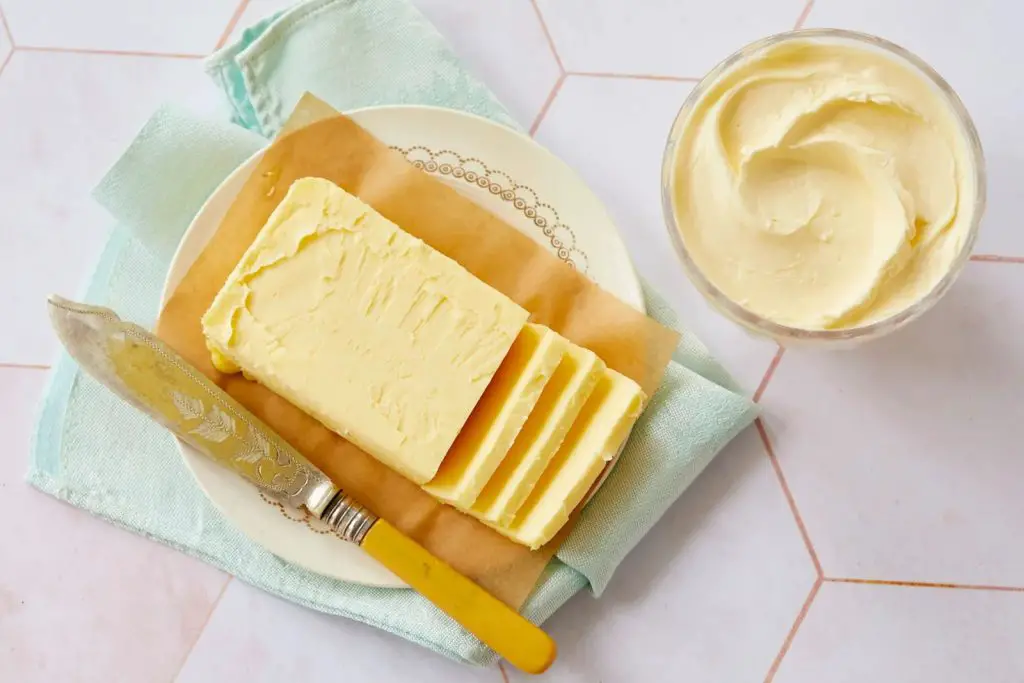
Gouda cheese, with its distinctive nutty flavor and smooth texture, is a beloved Dutch cheese that has gained popularity worldwide. This semi-hard cheese is renowned for its versatility and is often enjoyed on its own, melted on sandwiches, or incorporated into various dishes. If you have a surplus of Gouda cheese or want to preserve its freshness for later use, freezing is an excellent option. Freezing Gouda cheese allows you to extend its shelf life while maintaining its flavor and quality. In this guide, we will explore the best practices for freezing Gouda cheese, including proper packaging, storage techniques, and thawing instructions, so you can have a stock of this delicious cheese ready to elevate your meals. Join us as we delve into the world of freezing Gouda cheese and discover how to preserve its distinctive characteristics, ensuring that you can enjoy its delightful taste whenever the craving strikes.
Here are the simple steps to freeze gouda cheese:
Step 1: Select Fresh Gouda Cheese
When freezing Gouda cheese, it is crucial to start with a high-quality product that is fresh and in good condition. Here’s why this step is important:
- Quality preservation: Freezing can extend the shelf life of Gouda cheese, but it cannot improve the quality of a deteriorating product. Selecting fresh Gouda cheese ensures that you freeze it at its best, preserving its flavor, texture, and overall quality.
- Flavor retention: Fresh Gouda cheese has a more pronounced and enjoyable taste. By choosing a high-quality cheese, you enhance the chances of preserving its unique flavors during the freezing process. This is particularly important for Gouda cheese, which is known for its rich, nutty taste.
- Texture maintenance: The texture of Gouda cheese can be affected by freezing. However, starting with a firm-textured cheese gives you a better chance of maintaining its desirable texture after thawing. A cheese with a firm consistency will hold up better during freezing and retain its structure upon thawing.
- Prevention of spoilage: Selecting Gouda cheese that is free from any signs of spoilage, such as mold or an off smell, is crucial for food safety. Freezing will not reverse the effects of spoilage, so it’s essential to ensure that the cheese is fresh and in good condition before freezing.
By choosing fresh Gouda cheese with a firm texture, you set the stage for successful freezing and ensure that your frozen cheese retains its flavor and texture when it’s time to enjoy it.
Step 2: Cut the Cheese into Manageable Portions
Dividing the Gouda cheese into smaller, manageable portions before freezing is an important step in the freezing process. Here’s why it is recommended:
- Convenience in freezing: Cutting the Gouda cheese into smaller portions makes it easier to handle and freeze. Large blocks or wedges of cheese can be challenging to freeze uniformly and may take longer to thaw when you only need a small portion. By cutting it into manageable pieces, you have more control over the freezing process.
- Portion control: Dividing the Gouda cheese into smaller portions allows for better portion control when using it in the future. By considering the quantity you are likely to use in a single serving, you can freeze the cheese in individual or family-sized portions. This way, you can thaw only what you need, reducing waste and ensuring the remaining cheese stays frozen until the next use.
- Faster thawing: Smaller portions of Gouda cheese thaw more quickly than larger blocks. When you want to enjoy the cheese, having it divided into manageable portions allows for faster and more convenient thawing. It saves time and ensures that you can enjoy the cheese without waiting for a large block to thaw completely.
- Reduced oxidation: Cutting the Gouda cheese into smaller portions also helps reduce oxidation. When the cheese is exposed to air, it can undergo changes in flavor and texture over time. By cutting it into smaller portions, you minimize the cheese’s exposure to air, preserving its quality and reducing the risk of flavor degradation.
Cutting the Gouda cheese into manageable portions before freezing offers convenience, portion control, faster thawing, and helps maintain the cheese’s quality. It allows for a more efficient and enjoyable experience when using the frozen cheese in the future.
Step 3: Wrap the Cheese Tightly
After dividing the Gouda cheese into manageable portions, the next crucial step is to wrap each portion tightly before freezing. Here’s why it is important to wrap the cheese properly:
- Protection against freezer burn: Freezer burn occurs when food is exposed to air and moisture in the freezer. It can cause the cheese to become dehydrated, develop off flavors, and deteriorate in quality. By wrapping each portion tightly, you create a barrier that helps prevent air and moisture from reaching the cheese, reducing the risk of freezer burn.
- Maintaining texture and flavor: Proper wrapping helps maintain the texture and flavor of the Gouda cheese during freezing. When exposed to air, cheese can become dry and develop an unappealing texture. Additionally, the flavors of the cheese can be compromised by absorbing odors from other foods in the freezer. By wrapping the cheese tightly, you preserve its moisture content and protect it from absorbing unwanted flavors.
- Prevention of cross-contamination: Wrapping the cheese individually prevents cross-contamination with other foods in the freezer. Strong-smelling foods, such as onions or seafood, can transfer their flavors to the cheese if they come into contact. Tightly wrapping each portion creates a barrier that prevents the transfer of odors and maintains the integrity of the cheese’s flavor profile.
- Easy identification: Proper wrapping allows for easy identification of the cheese portions in the freezer. Clear plastic wrap or aluminum foil enables you to see the contents and differentiate them from other frozen items. This makes it convenient to locate and retrieve the desired portion when needed without having to unwrap multiple packages.
By wrapping each portion of Gouda cheese tightly in plastic wrap or aluminum foil, you provide protection against freezer burn, maintain the cheese’s texture and flavor, prevent cross-contamination, and enable easy identification in the freezer. These measures contribute to preserving the quality of the cheese throughout the freezing period.
Step 4: Place the Wrapped Cheese in a Resealable Bag
Once you have tightly wrapped each portion of Gouda cheese, the next step is to transfer them into resealable freezer bags. Here’s why this step is essential:
- Additional protection against freezer burn: Placing the wrapped cheese portions in a resealable freezer bag provides an extra layer of protection against freezer burn. Even if the individual wrappings are secure, the bag acts as an additional barrier, reducing the exposure of the cheese to air and preventing moisture loss. This helps maintain the cheese’s quality and texture during freezing.
- Minimization of air contact: Squeezing out as much air as possible from the resealable bag before sealing it helps minimize the risk of freezer burn. Air contains moisture, and excessive air in the bag can lead to the formation of ice crystals on the cheese’s surface, resulting in freezer burn. By removing the air, you create a more optimal environment for preserving the cheese’s flavor and texture.
- Organization and space efficiency: Placing the wrapped cheese portions in resealable bags allows for better organization in the freezer. It keeps the portions together and prevents them from getting scattered or lost among other freezer items. Additionally, using bags helps optimize space utilization as they can be stacked or arranged neatly, maximizing the available freezer space.
- Easy retrieval and portion control: Resealable bags provide convenient access to individual portions of Gouda cheese. When you need a specific amount, you can open the bag, remove the desired portion, and reseal the bag for future use. This allows for portion control and minimizes the need to thaw the entire batch of cheese when you only need a portion at a time.
By placing the tightly wrapped cheese portions in resealable freezer bags, squeezing out excess air, and sealing them securely, you provide an additional layer of protection against freezer burn, minimize air contact, enhance organization and space efficiency in the freezer, and enable easy retrieval and portion control. These measures contribute to maintaining the quality of the Gouda cheese during freezing and ensure convenient use in the future.
Step 5: Label the Bags
After placing the wrapped Gouda cheese portions in resealable freezer bags, it is important to label each bag with the date of freezing. Here’s why labeling is a crucial step:
- Tracking storage time: By labeling the bags with the date of freezing, you can easily track how long each portion of cheese has been in the freezer. This information is essential for maintaining food safety and quality. Over time, even frozen food can lose its optimal quality, and by knowing the storage time, you can ensure that you use the cheese within a recommended timeframe.
- First-in, first-out (FIFO) system: Labeling the bags allows you to practice the first-in, first-out (FIFO) method when using the frozen Gouda cheese. By using the oldest portions first, you ensure that none of the cheese goes to waste or exceeds its recommended storage time. The labeled dates help you identify which bags to use first, promoting efficient rotation of your cheese stock.
- Avoiding confusion: Labeling the bags with the freezing date helps prevent confusion in the freezer. If you have multiple bags of Gouda cheese, labeling them eliminates any guesswork and ensures you grab the right portion when you need it. It saves time and minimizes the risk of mistakenly thawing the wrong cheese or searching through multiple bags to find the desired portion.
- Quality control: The labeled dates provide a reference for assessing the quality of the frozen Gouda cheese. If you find a bag that has been stored for an extended period, you can make an informed decision about whether to use it or discard it based on recommended storage guidelines. This helps maintain the overall quality of your cheese supply.
By using a marker or a label to write the date of freezing on each bag, you can easily track the storage time, practice the first-in, first-out system, avoid confusion, and ensure quality control of the frozen Gouda cheese. This simple step contributes to organized and efficient freezer management and helps you make informed decisions about the cheese’s usage.
Step 6: Freeze the Gouda Cheese
Once the wrapped and labeled bags of Gouda cheese are prepared, the next step is to place them in the freezer. Here’s why it’s important to freeze the cheese properly:
- Temperature control: Freezing the Gouda cheese at the appropriate temperature is crucial for maintaining its quality. Set your freezer to a temperature of 0°F (-18°C) or below. This low temperature ensures that the cheese freezes quickly and minimizes the growth of microorganisms that can cause spoilage.
- Prevention of damage or shifting: When placing the bags of Gouda cheese in the freezer, it’s important to handle them carefully to prevent any damage or shifting. Rough handling or stacking items on top of the bags can lead to crushed or misshapen cheese portions. To maintain the integrity of the cheese, place the bags in a flat and stable position where they won’t be disturbed during freezing.
- Even freezing: It’s important to ensure that the Gouda cheese freezes evenly. This helps maintain the cheese’s texture and prevents the formation of large ice crystals that can negatively impact its quality. Avoid overcrowding the freezer by leaving enough space around the bags for proper air circulation. This promotes even freezing and maintains the cheese’s integrity.
- Storage organization: Proper placement of the sealed bags in the freezer allows for better organization. Designate a specific area or shelf in the freezer for the Gouda cheese to keep it separate from other frozen items. This makes it easier to locate and retrieve the cheese portions when needed, minimizing the time the freezer door is open and ensuring consistent freezing conditions for the cheese.
By putting the sealed bags of Gouda cheese in the freezer at the appropriate temperature, handling them carefully to prevent damage or shifting, promoting even freezing, and organizing their storage, you maintain the quality of the cheese during freezing. These measures help ensure that the Gouda cheese remains in optimal condition for future use and enjoyment.
How long can gouda cheese last in the freezer?
Gouda cheese can last in the freezer for up to 6 months without significant quality loss. Properly stored and wrapped, it can maintain its flavor and texture during this period. However, for the best taste and quality, it is recommended to consume the frozen Gouda cheese within 3-4 months of freezing.
Step 7: Thaw the Frozen Gouda Cheese
When you’re ready to enjoy the frozen Gouda cheese, it’s important to thaw it properly to preserve its texture and flavor. Here’s why thawing in the refrigerator is recommended:
- Gentle thawing process: Thawing Gouda cheese in the refrigerator allows for a slow and gentle thawing process. This gradual thawing helps maintain the cheese’s texture and prevents any drastic changes in its structure. Thawing at room temperature or using quick thawing methods like microwave thawing can lead to uneven thawing and potentially compromise the cheese’s quality.
- Preservation of flavor: Thawing in the refrigerator helps preserve the flavor profile of the Gouda cheese. The slow thawing process minimizes moisture loss and prevents flavor dilution or alteration. It allows the cheese to retain its original taste and characteristics, ensuring an enjoyable eating experience.
- Texture maintenance: Gouda cheese has a desirable texture, and thawing it slowly in the refrigerator helps maintain this texture. Rapid thawing methods can lead to moisture loss, resulting in a drier or crumbly texture. Thawing in the refrigerator prevents such texture changes and keeps the cheese moist and creamy.
- Food safety: Thawing in the refrigerator is a safe method that reduces the risk of bacterial growth. The controlled temperature of the refrigerator inhibits the growth of harmful bacteria, ensuring that the thawed Gouda cheese remains safe for consumption.
By thawing the frozen Gouda cheese in the refrigerator, you preserve its texture and flavor, ensure food safety, and enjoy the cheese at its best. This gentle thawing method maintains the integrity of the cheese and enhances your overall culinary experience.
Other related questions
Can you refreeze gouda cheese?
Refreezing Gouda cheese is not recommended as it can negatively impact its quality. When cheese is frozen and then thawed, the texture and moisture content can change, leading to a loss of quality. Additionally, multiple freeze-thaw cycles can increase the risk of bacterial growth and spoilage. It is best to thaw only the amount of Gouda cheese needed and consume it within a reasonable time to ensure optimal taste and texture.
How do I know if the gouda cheese has gone bad after being frozen?
After being frozen, it is important to assess the quality of Gouda cheese before consuming it. Signs of spoilage include an off smell, visible mold growth, or a significant change in texture, such as becoming excessively dry or crumbly. If the cheese exhibits any of these signs, it is recommended to discard it to prevent the risk of foodborne illness. When in doubt, trust your senses and prioritize food safety.
Can I freeze Gouda cheese for grating or shredding later?
Yes, you can freeze Gouda cheese for grating or shredding later. Start by ensuring the cheese is well wrapped to prevent freezer burn and maintain its quality. For best results, grate or shred the Gouda cheese before freezing and store it in airtight freezer bags or containers. When needed, thaw the frozen cheese in the refrigerator and use it in your desired recipes.
Can I freeze Gouda cheese with wax coating?
It is not recommended to freeze Gouda cheese with wax coating. Freezing can cause the wax to become brittle and potentially crack, compromising the integrity of the cheese. To freeze Gouda cheese, it is best to remove the wax coating, wrap the cheese tightly in plastic wrap or aluminum foil, and place it in a freezer-safe container or bag.
Can I freeze Gouda cheese spreads or dips?
It is generally not recommended to freeze Gouda cheese spreads or dips. Freezing can affect the texture and consistency of the spread, leading to a less desirable result when thawed. It is best to consume Gouda cheese spreads or dips fresh or refrigerate them for short-term storage to maintain their quality and flavor.
Can I freeze Gouda cheese for use in recipes like macaroni and cheese?
Yes, you can freeze Gouda cheese for use in recipes like macaroni and cheese. Start by shredding or grating the Gouda cheese before freezing it. Place the cheese in airtight freezer bags or containers, removing as much air as possible. Thaw the frozen cheese in the refrigerator before using it in your macaroni and cheese recipe for optimal melting and flavor.
Can I freeze Gouda cheese for making fondue or cheese sauces?
Yes, you can freeze Gouda cheese for making fondue or cheese sauces. Start by shredding or cubing the Gouda cheese before freezing. Place the cheese in airtight freezer bags or containers, ensuring they are tightly sealed. When needed, thaw the frozen cheese in the refrigerator and use it in your fondue or cheese sauce recipe, gradually melting it over low heat for smooth and creamy results.








